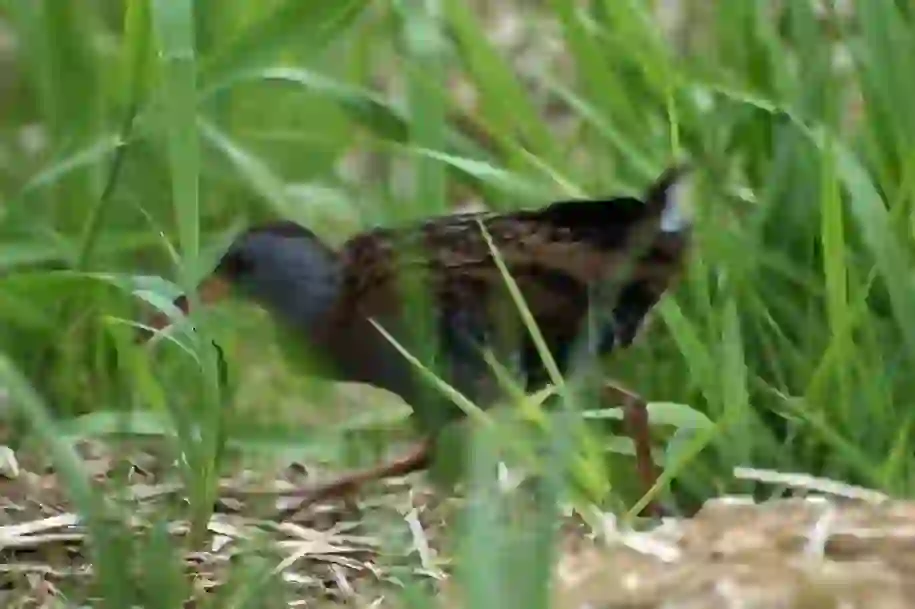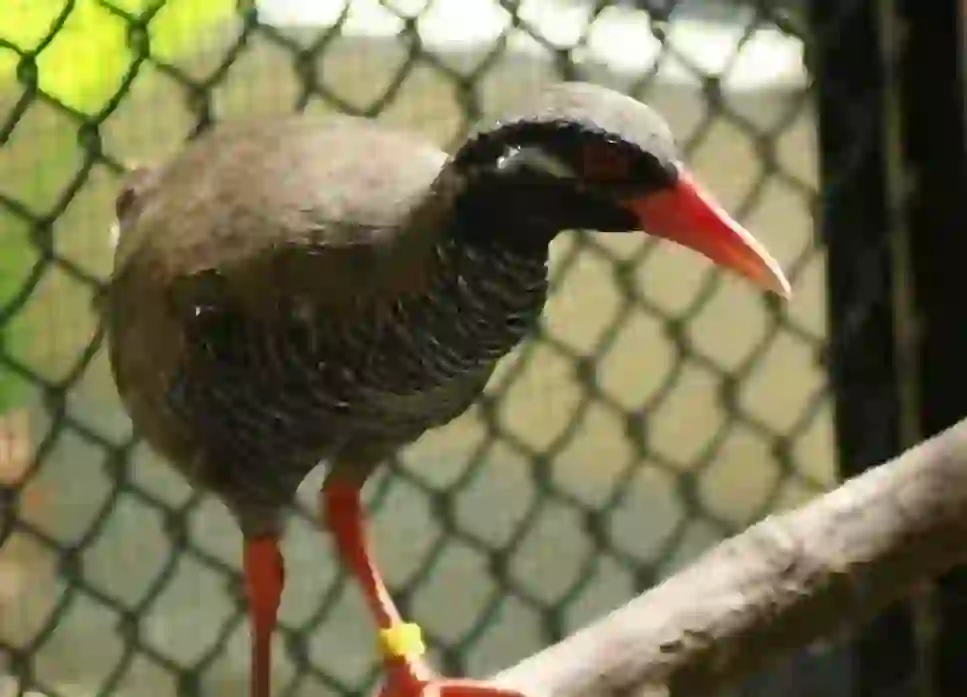
Water Rail
Water Rail
Water Rail
Are you familiar with the bird called 'Water Rail'? Since it is rarely seen in human inhabited areas, many people may not know it well or have never heard of it. On the other hand, many may have heard of the 'Okinawa Rail.' The term 'rail' can refer to the general family of rails or to specific species within the rail family. This article will cover the specific species known as the 'Water Rail.' Let's explore what kind of bird the Water Rail is and delve into its ecology!
Water Rail Basic Infomation

Order: Gruiformes, Family: Rallidae, Genus: Rallus
Total length: 23-31 cm
Wingspan: 38-45 cm
Weight: 100-200 g
Slightly smaller than a pigeon.
The rail family is widely distributed across Western Europe, North Africa, Central Asia, East Asia, and Japan.
In temperate regions, they are resident birds that stay in the area all year round, but there are also migratory species that move south in winter. The species found in Japan are migratory, moving to warmer regions such as southern Japan during winter.
Rails prefer habitats near water. Particularly, they inhabit wetlands, lakes, bamboo thickets near water bodies, and rice fields, favoring areas covered with tall vegetation for protection.
They prefer such places to hide from predators and can even dive into water.
Due to their secretive nature and dull feather colors, which do not stand out, rails can be difficult to spot. Many people who have not seen them may simply have overlooked their presence.
Another characteristic is that males and females are the same color.
Their body shape is plump and rounded overall.
However, they are characterized by long beaks and thick legs. The color of the beak changes with the seasons; in winter, only the lower beak turns red, while during the breeding season in early summer, it turns red overall.
Rails are not adept flyers, so when threatened, they prefer to run and hide in the underbrush.
Their thick, well-developed legs suggest that they have evolved to run rather than fly.
The breeding season for rails is around June, and they lay about 6-10 eggs. The incubation period is said to be around 20 days, with both males and females taking turns warming the eggs.
As part of their courtship behavior, males touch the females' chests, spread their wings and tail feathers to appeal, and sometimes even present food.
In response, the female vocalizes and wanders around the male, rubbing her beak and preening her feathers.
Chicks hatch and leave the nest within 2-3 days, and they can fly about 20-30 days after hatching. In Japan, breeding was originally observed in the northern regions like Hokkaido and Tohoku, but in recent years, breeding has also been confirmed in the Kanto region.
Water Rail Q&A

What is the origin of the name 'Water Rail'?
There are several theories about the origin of the name 'Water Rail,' but the most common one is that it derives from its call. The sound of 'kuh-kuh' led to the name 'kuina' in Japanese. Another theory suggests it was named for its feeding habits, as 'kuu' means 'to eat' in Japanese. The English name 'Water Rail' refers to its habitat by the water.

Why do water rails live there?
Water rails prefer habitats with dense vegetation near water bodies, such as reeds or bamboo thickets, which provide excellent cover. Their poor flying ability makes it essential to live in places where they can easily hide. Additionally, these areas are rich in insects and plants, which are important food sources.

What do water rails eat?
Water rails are voracious eaters and consume a wide variety of insects, crustaceans, mollusks, fish, stems, and seeds. They essentially eat whatever is available in their habitat.

What does the water rail sound like?
The call of the water rail is often described as 'kui-kui' or 'kuk-kuk'. Their alarm call is a sharp note, spaced well apart, while their song consists of short, rapid notes strung together. However, being shy and cautious, their voices are not often heard. During the breeding season, they may vocalize as part of courtship, so hearing them can be considered lucky.

Are 'Water Rail' and 'Marsh Rail' the same bird?
The 'Marsh Rail' is similar to the 'Water Rail' but they are different species. In ancient Japan, they might have been considered the same. The term 'water chicken' appears in classical Japanese literature, often referring to the 'Marsh Rail'. However, 'Marsh Rails' tend to have a reddish hue, making them distinguishable from 'Water Rails' today. The terms 'winter rail' for the water rail seen in winter and 'summer rail' for the marsh rail seen in summer are also used, but these are colloquial names.

Can water rails fly?
Water rails can fly, but very poorly, similar to chickens. Like chickens, they have very well-developed legs and usually walk on the ground. When threatened, they crouch and run to hide in underbrush. They prefer running to flying when escaping danger. Some species within the rail family are capable of flying, which depends on the presence of predators and evolutionary adaptations. In environments with fewer predators, rails may evolve not to fly. Of the over 130 species of rails, more than 30 are poor fliers.

Are water rails shy?
Water rails are very cautious and shy birds. They hardly ever appear in front of people and spend most of their time hiding. Most rails are nocturnal, resting in thick vegetation during the day and avoiding open or bright areas. They quickly hide at the slightest disturbance. The discovery of the Okinawa Rail was significant because new bird species were not thought to exist in Japan; its nocturnal habits and the terrain of Okinawa helped it remain undetected for a long time.

Would you like to become a part of the 'Animalbook.jp'?
Turn your knowledge into Q&A and share it with the world. ※Publication will be activated after purchase. Let's share information together!
Water Rail Type of List

- Water Rail
- Red-billed Rail
- Little Rail
- Demon Rail
- Speckled Rail
- Charming Rail
- Chatham Rail
- Northern Grey Rail
- Guam Rail
- Tahiti Rail
- Australian Rail
- Southern Pacific Rail
- Grey Rail
- South American Rail
- Southern Rail
- Wake Rail
- Plain Rail
Information
Congratulations! You are the first commenter!

Create Your Favorite List!
Water Rail
Save the animals you love! Build your own list to quickly revisit your favorites later.

Would you like to leave a comment?
※Please note: This is for the purchase of rights to post comments within the article.
Find Your Favorites!
Our shop offers a unique and attractive selection of goods themed around various animals.
Water Rail References

- Wikipedia https://ja.wikipedia.org/wiki/クイナ
- サントリーの愛鳥活動 https://www.suntory.co.jp/eco/birds/encyclopedia/detail/1515.html
- BIRDFAN https://www.birdfan.net/pg/kind/ord08/fam0802/spe080200/
- コトバンク https://kotobank.jp/word/クイナ-54748
- 京都府レッドデータブック2015 https://www.pref.kyoto.jp/kankyo/rdb/bio/db/bird0024.html
- PetPedia https://petpedia.net/article/708/crake#toc-113
- 鳥ペディア http://bird-pedia.com/archives/1971
Water Rail Introduction of media used

出典:https://pixabay.com/images/id-3072173/

Hobbyfotowiki, CC0, ウィキメディア・コモンズ経由で

出典:https://pixabay.com/images/id-5975163/

出典:https://pixabay.com/images/id-5111577/

Help Enrich Our Animalbook.jp with Your Media!
We are constantly looking to expand and enrich our Animalbook.jp with amazing photos and videos of animals. If you have any media that you'd like to share, please contribute and help us showcase the beauty and diversity of the animal kingdom. Your submissions will be credited and featured in our encyclopedia, reaching a wide audience of animal lovers.






















